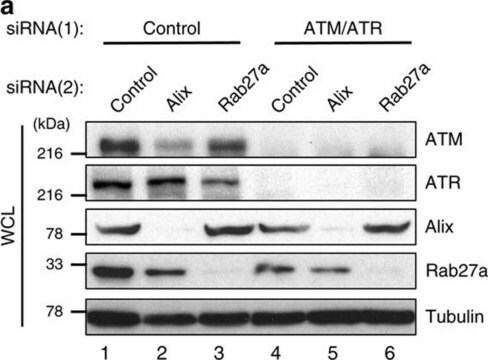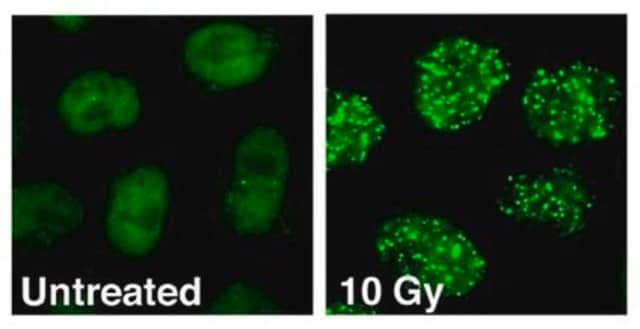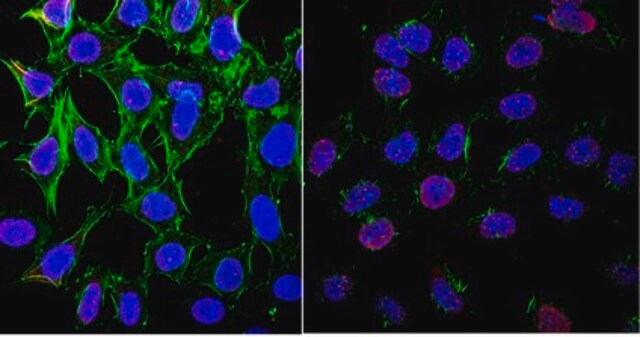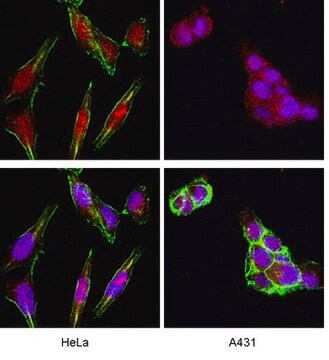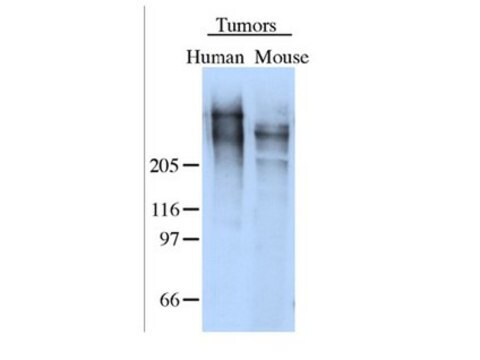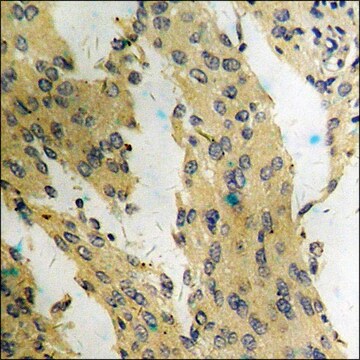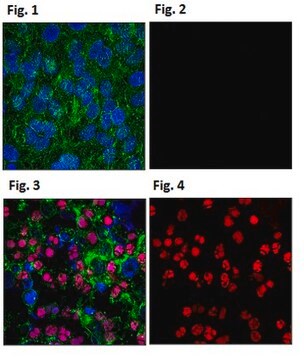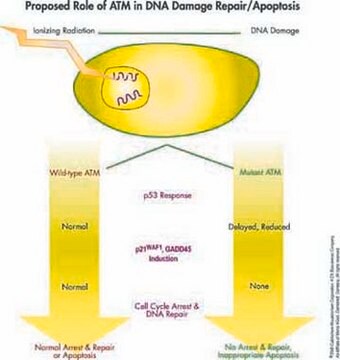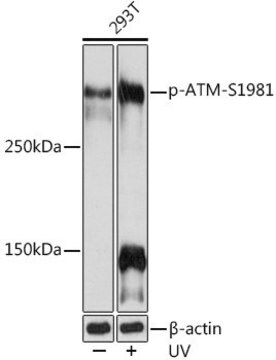05-740
Anti-phospho-ATM (Ser1981) Antibody, clone 10H11.E12
clone 10H11.E12, Upstate®, from mouse
Synonim(y):
A-T, mutated, AT mutated, TEL1, telomere maintenance 1, homolog, ataxia telangiectasia mutated, ataxia telangiectasia mutated (includes complementation groups A, C and D), ataxia telangiectasia mutated protein, human phosphatidylinositol 3-kinase homolog
About This Item
Polecane produkty
pochodzenie biologiczne
mouse
Poziom jakości
forma przeciwciała
purified antibody
rodzaj przeciwciała
primary antibodies
klon
10H11.E12, monoclonal
reaktywność gatunkowa
mouse, human
opakowanie
antibody small pack of 25 μg
producent / nazwa handlowa
Upstate®
metody
immunocytochemistry: suitable
immunofluorescence: suitable
immunoprecipitation (IP): suitable
western blot: suitable
izotyp
IgG1κ
numer dostępu NCBI
numer dostępu UniProt
Warunki transportu
ambient
docelowa modyfikacja potranslacyjna
phosphorylation (pSer1981)
informacje o genach
human ... ATM(472)
Opis ogólny
Specyficzność
Immunogen
Zastosowanie
Phosphorylated ATM was immunoprecipitated from irradiated HeLa cells (Figure A, lanes 3 and 4).
Immunocytochemistry:
Foci are detected in irradiated human and mouse fibroblasts. Determined by an independent laboratory.
Epigenetics & Nuclear Function
Cell Cycle, DNA Replication & Repair
Jakość
Western Blot Analysis:
0.5 µg/mL of this lot detected phosphorylated ATM in crude lysates from irradiated HeLa cells.
Opis wartości docelowych
Postać fizyczna
Przechowywanie i stabilność
Handling Recommendations:
Upon receipt, and prior to removing the cap, centrifuge the vial and gently mix the solution. Aliquot into microcentrifuge tubes and store at -20°C. Avoid repeated freeze/thaw cycles, which may damage IgG and affect product performance. Note: Variability in freezer temperatures below -20°C may cause glycerol containing solutions to become frozen during storage.
Komentarz do analizy
Irradiated HeLa cell lysates
Inne uwagi
Informacje prawne
Oświadczenie o zrzeczeniu się odpowiedzialności
Nie możesz znaleźć właściwego produktu?
Wypróbuj nasz Narzędzie selektora produktów.
polecane
Kod klasy składowania
10 - Combustible liquids
Klasa zagrożenia wodnego (WGK)
WGK 1
Certyfikaty analizy (CoA)
Poszukaj Certyfikaty analizy (CoA), wpisując numer partii/serii produktów. Numery serii i partii można znaleźć na etykiecie produktu po słowach „seria” lub „partia”.
Masz już ten produkt?
Dokumenty związane z niedawno zakupionymi produktami zostały zamieszczone w Bibliotece dokumentów.
Nasz zespół naukowców ma doświadczenie we wszystkich obszarach badań, w tym w naukach przyrodniczych, materiałoznawstwie, syntezie chemicznej, chromatografii, analityce i wielu innych dziedzinach.
Skontaktuj się z zespołem ds. pomocy technicznej
